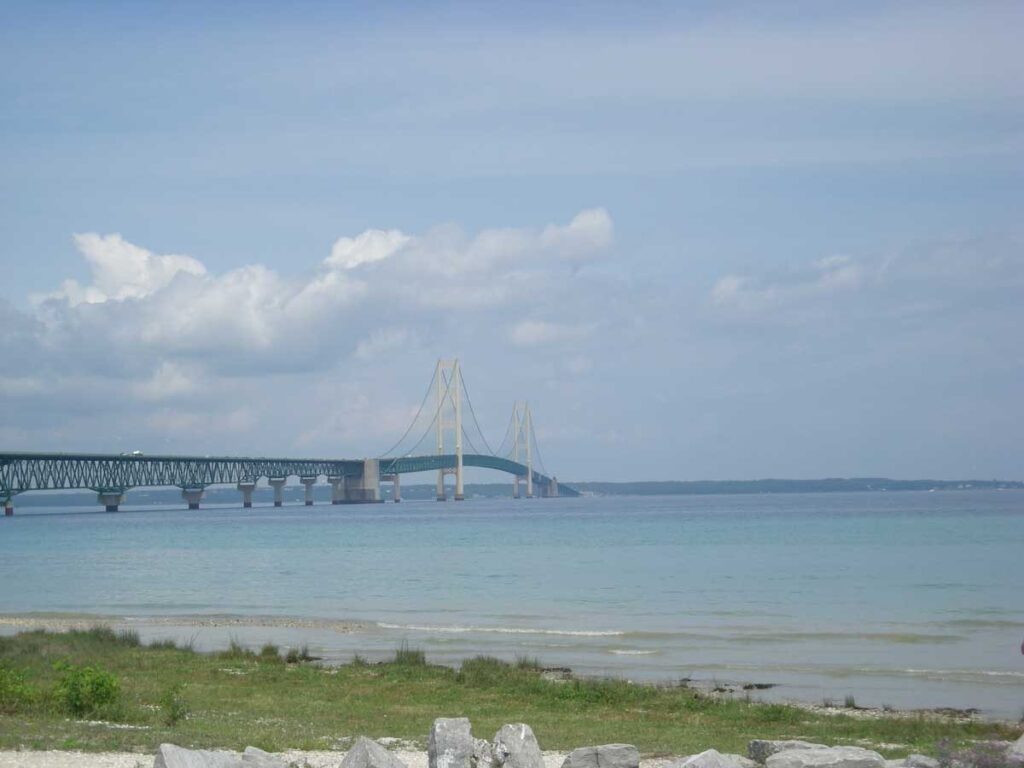The Future of Line 5: Environmental Concerns and Legal Challenges
The Line 5 pipeline, a critical component of the Great Lakes region’s energy infrastructure, faces significant scrutiny as it navigates its seventh decade of operation. Transporting over 500,000 barrels of petroleum products daily from Wisconsin to Canada, the pipeline’s route beneath the Straits of Mackinac places it at the heart of environmental and legal debates.
Throughout its history, Line 5 has experienced over 30 leaks, releasing more than 1 million gallons of oil. A 2016 study by the University of Michigan highlighted the potential vulnerability of more than 700 miles of Great Lakes shoreline to oil spills if the pipeline were to fail in the straits.
Enbridge, the Canadian operator of the pipeline, has proposed constructing a tunnel beneath the straits to ensure the pipeline’s protection and continued operation. This proposal has gained traction with the Trump administration, which, citing an energy emergency, has urged the U.S. Army Corps of Engineers to expedite its environmental impact assessment.
The U.S. Army Corps of Engineers is expected to release its draft Environmental Impact Statement by May 30. This could pave the way for Enbridge’s project, following a 30-day period for public comments, despite facing opposition from various quarters.

Julia Cole, a professor at the University of Michigan’s Department of Earth and Environmental Sciences, has voiced concern about the pipeline’s impact on climate change efforts.
How does your background influence your perspective on Line 5?
I was drawn to the Line 5 issue due to my work as a climate scientist. We need to drastically reduce fossil fuel consumption to meet global warming targets, yet investments in fossil fuel infrastructure persist. Many Michiganders, like myself, are passionate about protecting the Great Lakes for future generations.
What are the dangers of surpassing a 1.5-degree warming threshold?
Many underestimate the severe impacts of even minor increases in global temperatures. Beyond 1.5 degrees, we face heightened risks of natural disasters, insurance challenges, and widespread ecological disruptions. In Michigan, climate change is already affecting agriculture, with unpredictable weather patterns causing significant crop losses.
Enbridge claims that an “all of the above” energy solution is necessary. What is your response?
While this approach might have been feasible in the past, we can no longer afford to rely on fossil fuels. Continuing down this path accelerates climate change, with dire consequences for ecosystems like coral reefs. We need to focus on renewable energy to mitigate further damage.
Is there truly an energy emergency?
Renewable energy is now more cost-effective than fossil fuels for electricity production. The notion of an energy emergency is misleading. Instead, we face a “willpower emergency” to fully transition to clean energy solutions. With advancements in battery technology, renewable sources are becoming increasingly viable.
It’s crucial to recognize that our actual crisis is climate-related, and addressing it requires a shift away from fossil fuels.
Original Story at news.umich.edu
